Your Guide to Getting a Snug Piercing: All You Need to Know
Picture this: a subtle sparkle adorning your ear, an expression of individuality that captures attention without saying a word. Welcome to the world of snug piercings, a captivating trend that seamlessly blends edginess with elegance. In this comprehensive guide, we’ll take you on a journey through the ins and outs of snug piercings, from their various types to healing times and the art of selecting the perfect jewelry. What is a Snug Piercing? A snug piercing, as the name implies, is a type of ear piercing that runs through the inner ridge of the ear cartilage, creating a snug, […]

Picture this: a subtle sparkle adorning your ear, an expression of individuality that captures attention without saying a word. Welcome to the world of snug piercings, a captivating trend that seamlessly blends edginess with elegance. In this comprehensive guide, we’ll take you on a journey through the ins and outs of snug piercings, from their various types to healing times and the art of selecting the perfect jewelry.

What is a Snug Piercing?
A snug piercing, as the name implies, is a type of ear piercing that runs through the inner ridge of the ear cartilage, creating a snug, snug-fitting look. It’s a versatile canvas for self-expression, allowing you to curate a unique style statement. Whether you opt for a single snug piercing or decide to adorn your ear with multiples, the choice is yours, making snug piercings an exciting choice for those who crave individuality.
A snug piercing runs through the inner ridge of the ear cartilage
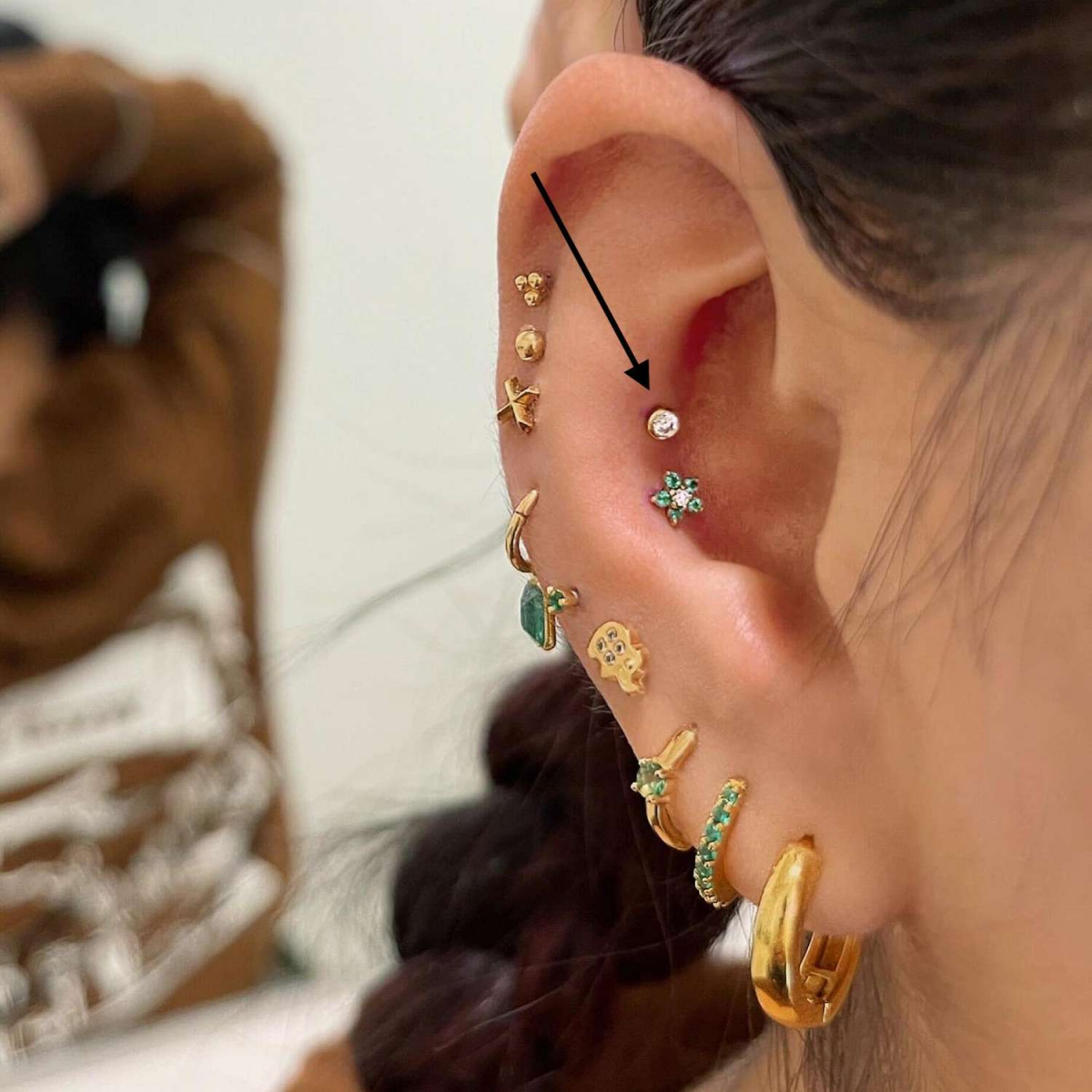
Types of Snug Piercings
Just as with any form of self-expression, snug piercings come in a variety of styles to cater to different tastes and personalities. Among the most sought-after types are:
- Antihelix Snug: Positioned along the inner ridge of the ear’s antihelix, this piercing offers a striking and slightly edgy appearance.
- Conch Snug: Placed near the conch area, this style provides a unique and eye-catching look that complements your ear’s natural contours.
- Rook Snug: Nestled in the upper part of the ear’s antihelix, the rook snug piercing adds a touch of elegance and individuality.
- Daith Snug: Located in the innermost fold of the ear, the daith snug piercing creates a subtle yet captivating effect.
Each snug piercing type has its charm and placement, providing ample opportunities for self-expression and style customization, whether you prefer a minimalist approach or a more elaborate ensemble of piercings.
Each snug piercing type has its charm and placement, providing lots of opportunities for customization
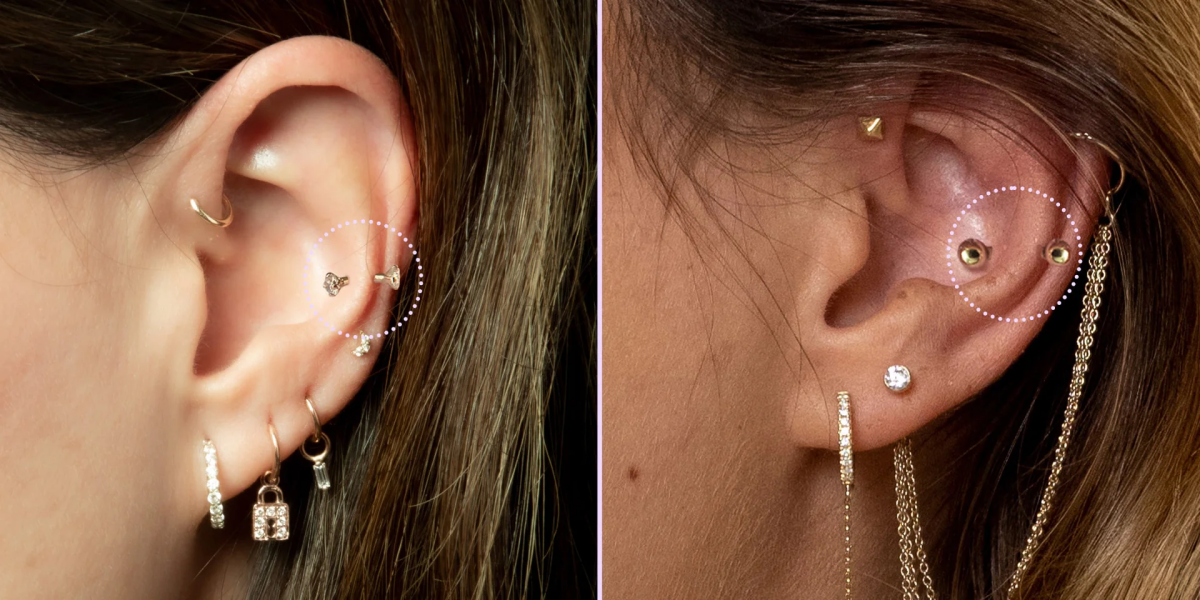
How Much Does It Usually Cost?
The cost of snug piercings can vary widely depending on several factors, including the location of the piercing studio, the reputation of the piercer, and the types of jewelry you choose. On average, you can expect to pay anywhere from $40 to $100 or more per piercing. High-quality jewelry may incur additional costs, but it’s a worthwhile investment in both style and safety.
You can expect to pay anywhere from $40 to $100 or more
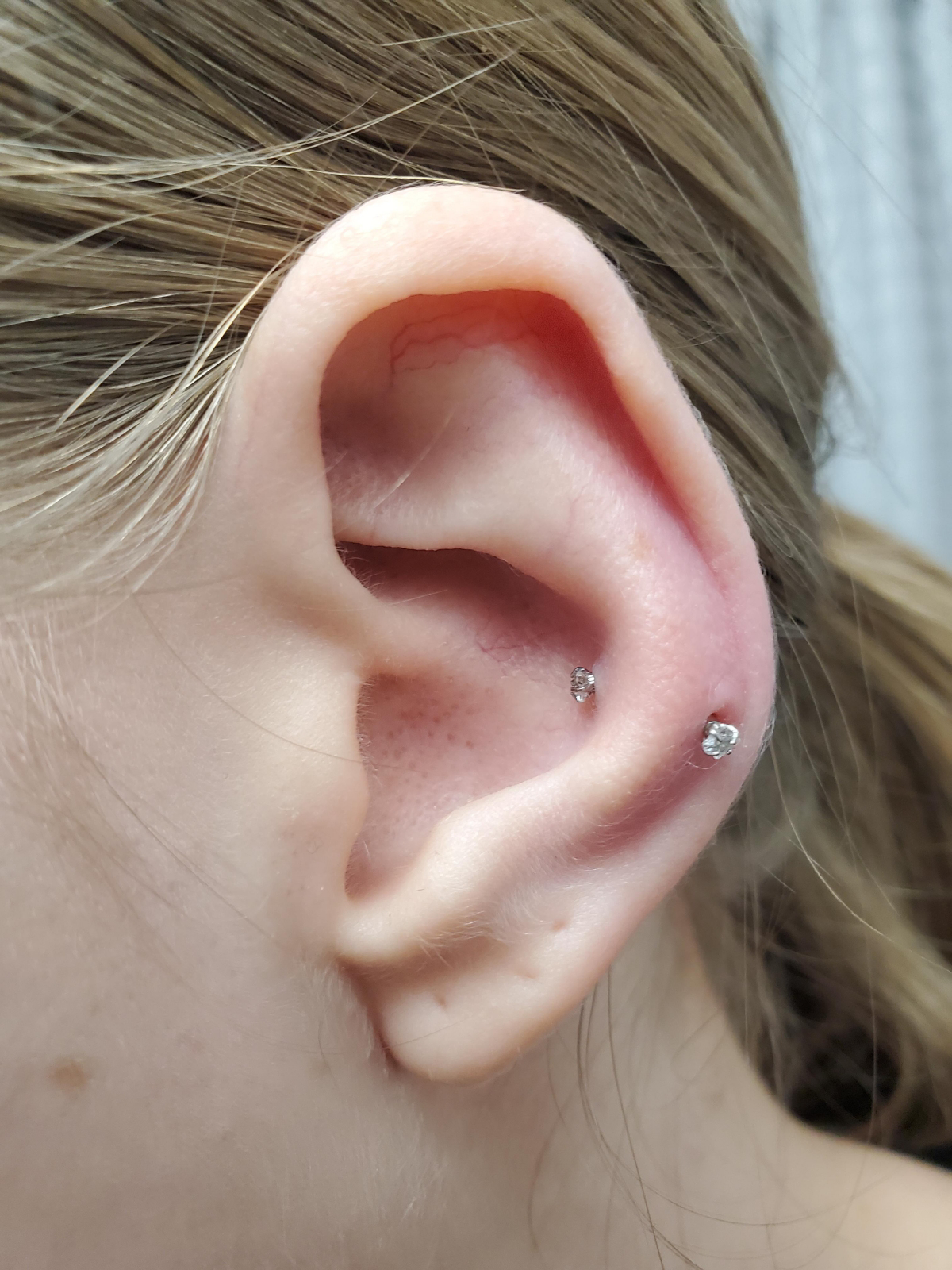
Who Should Get a Snug Piercing?
Snug piercings are a fantastic choice for individuals seeking to add a touch of sophistication and uniqueness to their appearance. If you appreciate creative jewelry options and don’t mind the commitment to aftercare, a snug piercing could be an ideal choice. However, it’s essential to consider personal preferences, pain tolerance, and potential workplace restrictions before taking the plunge.
If you appreciate creative jewelry options, a snug piercing could be a great choice
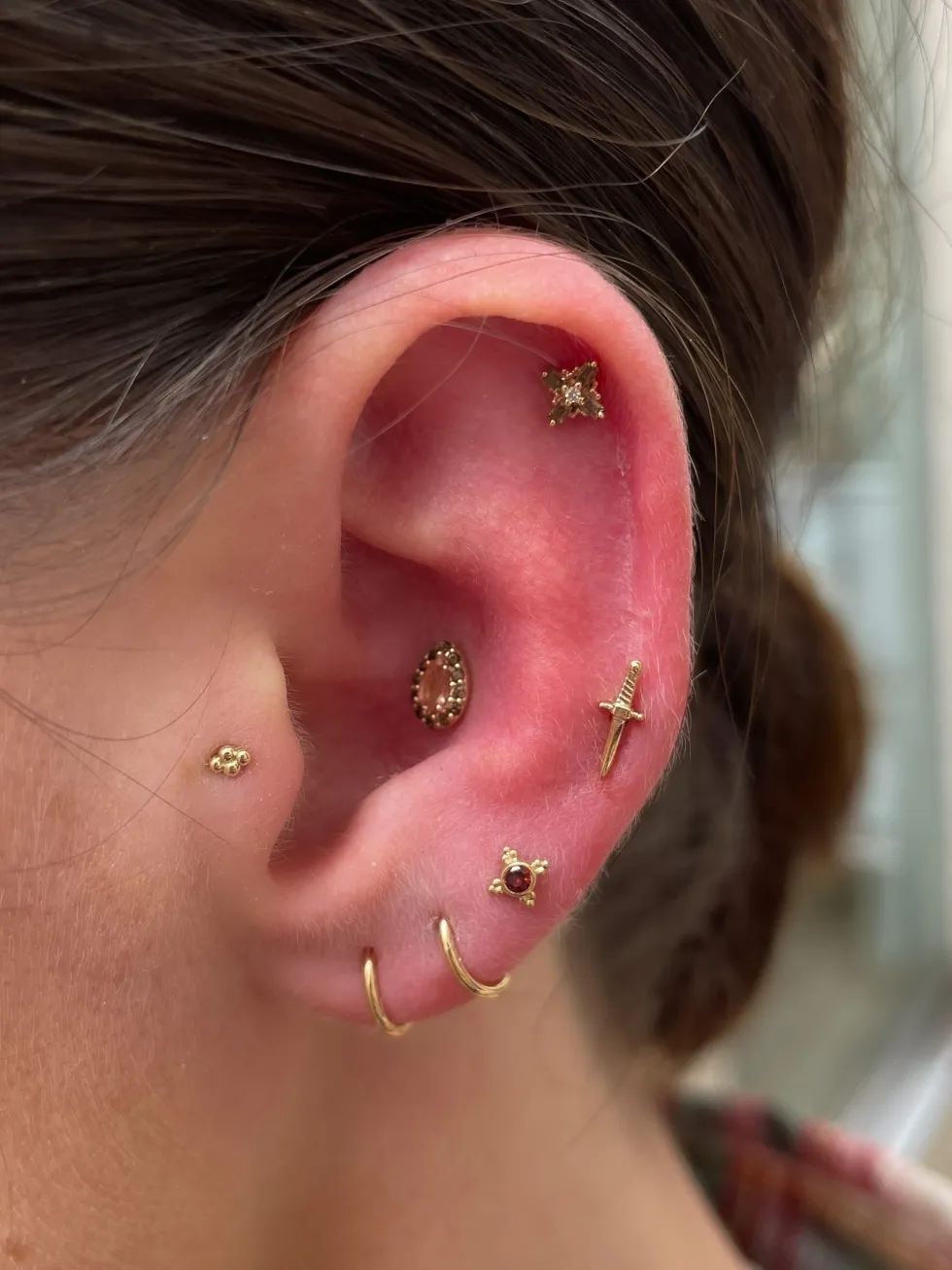
Who Should Avoid It and Why?
While snug piercings are stunning, they may not be suitable for everyone. Individuals with a low pain tolerance or those prone to keloid scarring should exercise caution. Additionally, if you have any ear cartilage issues or sensitivities, it’s advisable to consult a professional before getting this piercing.
If you have any ear cartilage issues or sensitivities, be aware
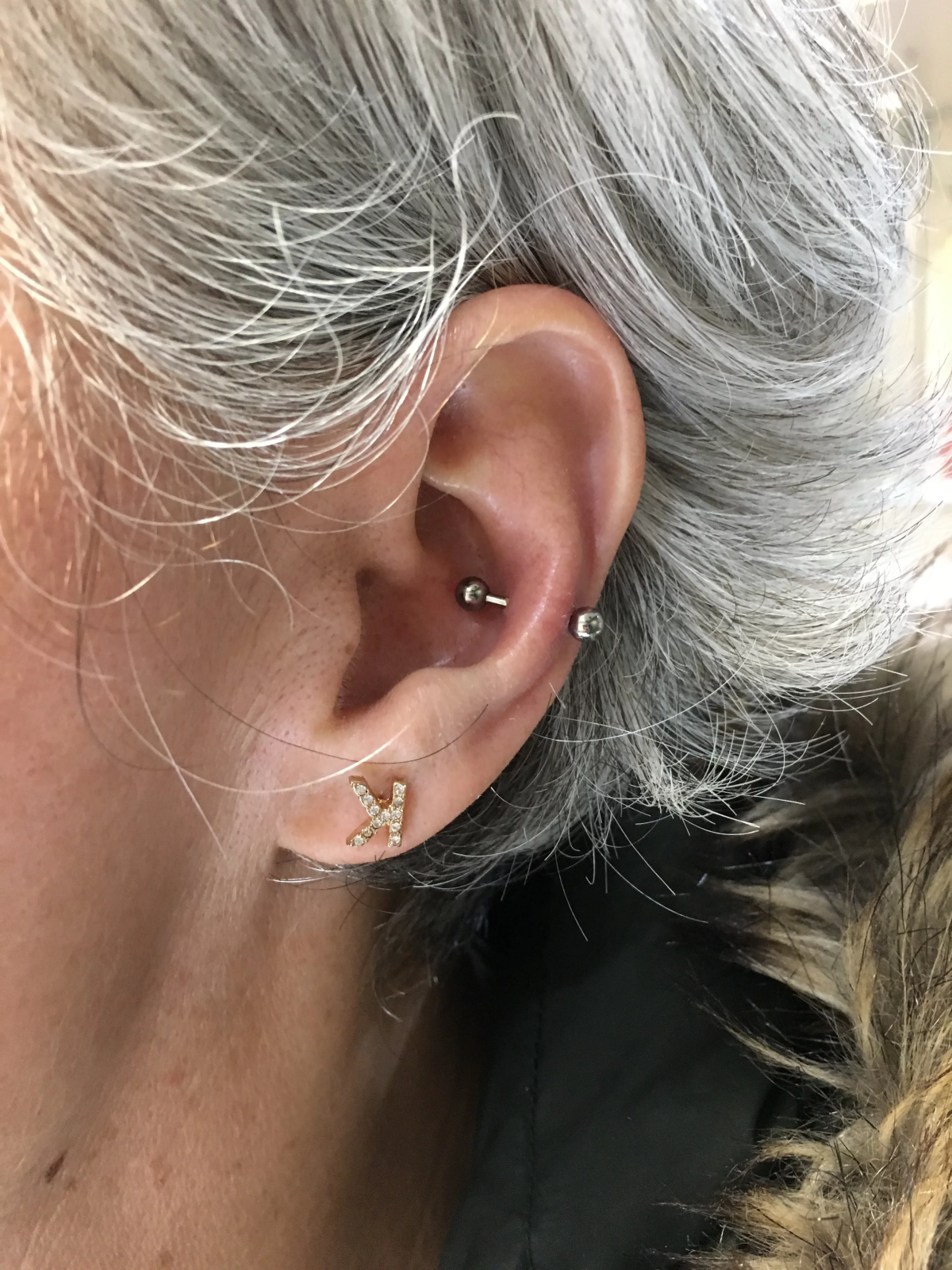
Does a Snug Piercing Hurt?
The pain experienced during a snug piercing can vary from person to person. Most describe it as a sharp pinch or discomfort that lasts only a few seconds. However, the pain is relatively short-lived, and many find the end result well worth the momentary discomfort.
The pain experienced during a snug piercing can vary from person to person
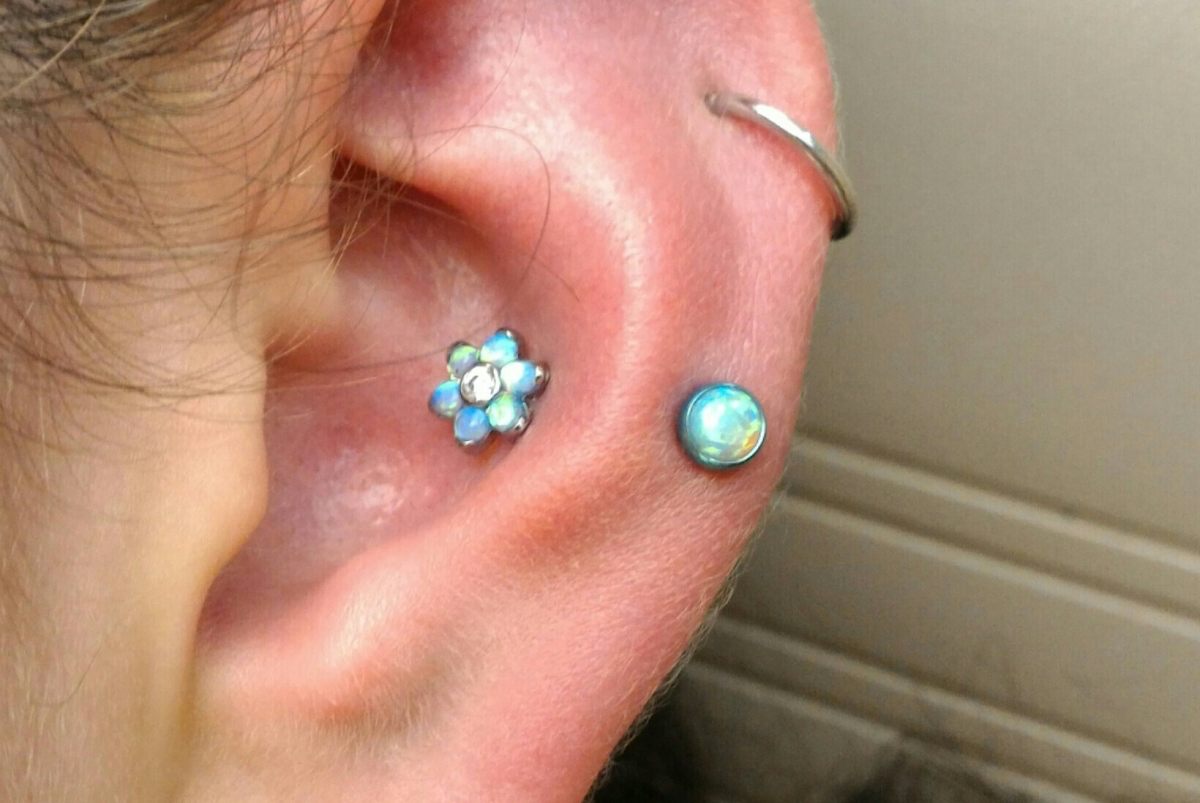
Advantages and Disadvantages of a Snug Piercing
Snug piercings offer numerous advantages, including their stylish and customizable nature. However, they also come with considerations, such as the potential for longer healing times. We’ll explore both aspects to help you make an informed decision.
Advantages
- Unique Style Statement: Snug piercings are an excellent means of showcasing your unique personality and fashion sense. They instantly draw attention to your ear, allowing you to stand out from the crowd.
- Versatile Jewelry Options: One of the most significant advantages of snug piercings is their versatility when it comes to jewelry selection. You have a wide range of choices, from delicate studs and elegant hoops to bold and eye-catching rings. This variety enables you to experiment with different looks and express your style creativity.
- Balanced Aesthetic: Snug piercings are known for their balanced and symmetrical appearance, adding a sense of harmony to your ear’s overall look. They create a visually appealing frame for your ear, enhancing its natural beauty.
- Personal Expression: These piercings provide an additional canvas for personal expression. You can mix and match jewelry styles, colors, and sizes to curate a look that mirrors your ever-changing moods and preferences.
- Enhanced Confidence: Many individuals find that snug piercings boost their self-confidence. The act of choosing and displaying such a unique piercing can be empowering, making you feel more comfortable and self-assured in your skin.
Snug piercings are an excellent way to showcase your unique personality and fashion sense
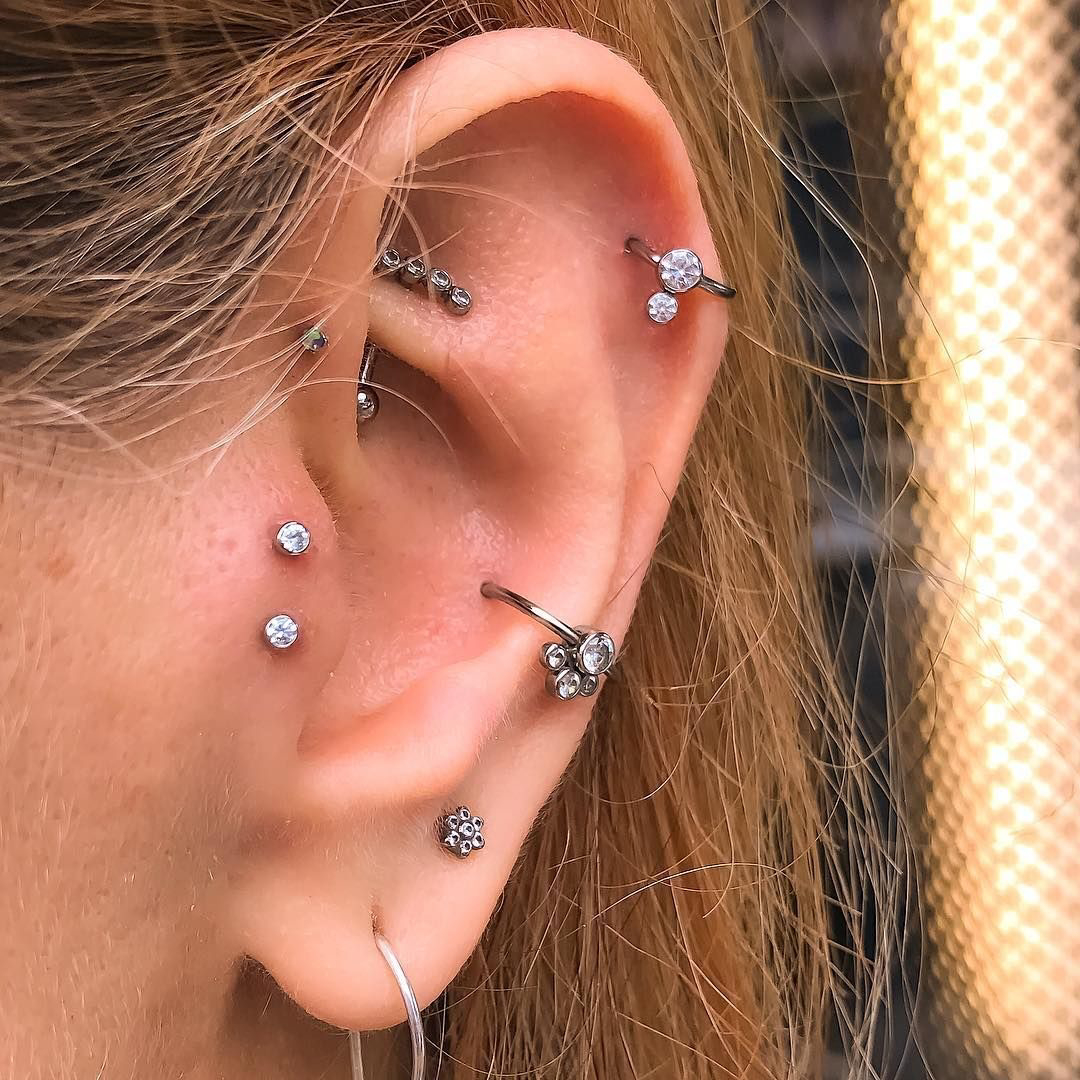
Disadvantages
- Longer Healing Times: One of the primary drawbacks of snug piercings is their potentially longer healing period compared to some other ear piercings. The ear is a dynamic and sensitive area, and healing times can vary from a few months to a year or more. Patience and careful aftercare are essential during this phase.
- Oral Discomfort: Initially, you may experience some oral discomfort, including swelling, bruising, and tenderness around the pierced area. This discomfort can affect activities such as eating and speaking, so it’s crucial to be prepared for these temporary inconveniences.
- Risk of Infection: Like any piercing, there’s a risk of infection with snug piercings. It’s vital to follow strict aftercare procedures, including proper cleaning and avoiding activities that could introduce bacteria into the piercing site.
- Potential Cartilage Issues: Snug piercings involve piercing through ear cartilage, which can be more prone to complications compared to soft tissue piercings. It’s essential to choose an experienced and reputable piercer to minimize the risk of issues.
- Aftercare Commitment: Proper aftercare is essential to ensure the successful healing of snug piercings. This commitment can be time-consuming and may require adjustments to your daily routine to accommodate cleaning and care procedures.
In conclusion, snug piercings offer a fantastic opportunity for personal expression and style experimentation. However, they come with certain challenges, including longer healing times and the need for diligent aftercare. If you’re willing to invest the time and effort into caring for your snug piercing, it can be a stunning addition to your overall aesthetic, boosting your confidence and showcasing your unique personality.
Choose an experienced and reputable piercer to minimize the risk of issues
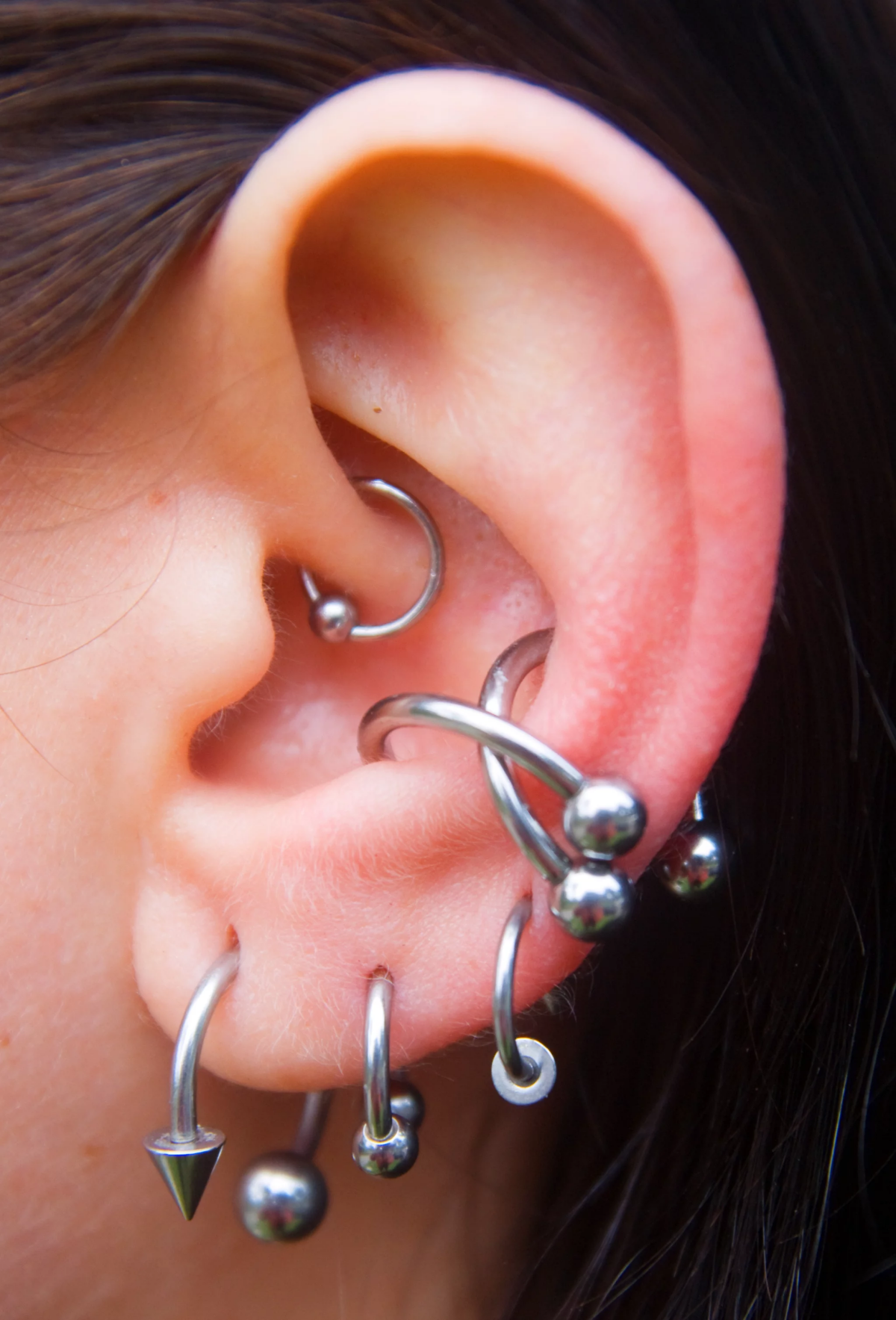
How Long Does a Snug Piercing Take to Heal?
Healing times for snug piercings can vary from person to person, typically ranging from three to nine months. However, it’s crucial to follow proper aftercare guidelines to ensure a smooth and comfortable recovery.
The healing time typically ranges from three to nine months
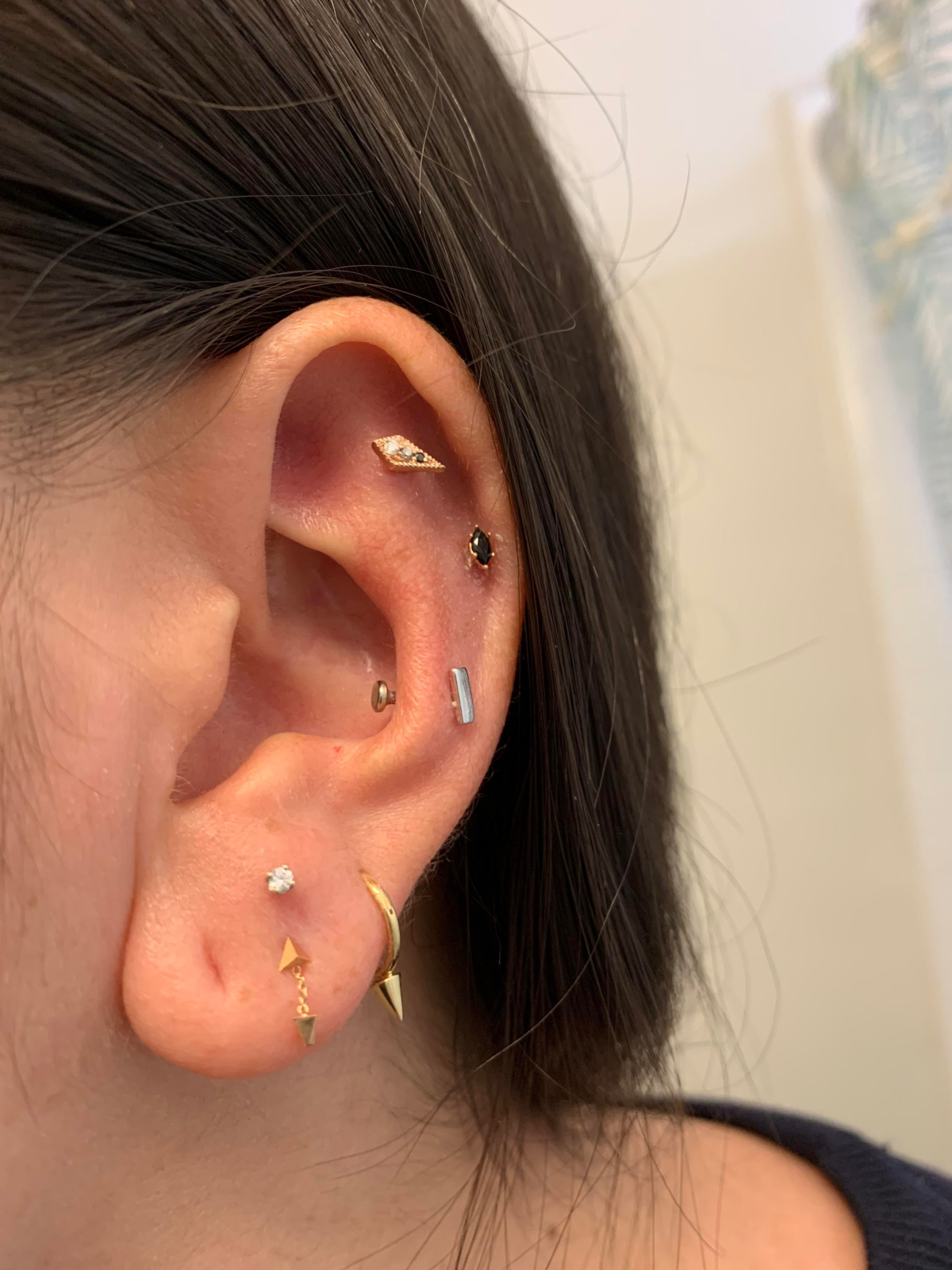
What Material and What Type of Jewelry Is Best for a Snug Piercing?
Choosing the right jewelry for your snug piercing is crucial for both aesthetics and comfort. Your piercer will typically recommend initial jewelry made of high-quality materials like surgical stainless steel, implant-grade titanium, or biocompatible materials. These materials are known for their hypoallergenic properties, reducing the risk of irritation and allergic reactions. In terms of jewelry types, curved barbells are a popular choice for snug piercings due to their comfortable fit and ability to accommodate the curvature of the ear. However, you can explore various options, including captive bead rings, seamless rings, or even segment rings, depending on your style preferences. When selecting jewelry, consider factors like size, gauge, and design. Your piercer will help you choose the appropriate size to ensure a snug fit without causing undue pressure or irritation. As your piercing heals, you can explore different designs and styles to express your unique personality.
When selecting jewelry, consider factors like size, gauge, and design

How to Take Care of a Snug Piercing
Proper aftercare is paramount to ensure the successful healing of your snug piercing. Here are some essential tips to guide you through the process:
- Clean with Saline Solution: Use a saline solution (a mixture of non-iodized sea salt and warm distilled water) to clean your snug piercing. Gently rinse the area at least twice a day, particularly after any contact that may introduce dirt or bacteria.
- Hands Off: Always wash your hands thoroughly before touching your piercing. Avoid unnecessary contact with dirty hands, as this can introduce bacteria and increase the risk of infection.
- Avoid Oral Contact: During the initial healing period, it’s crucial to avoid any oral contact with your snug piercing. This includes refraining from kissing, oral sex, or playing with the jewelry to prevent irritation and infection.
- Rinse After Eating and Drinking: After consuming food or beverages, rinse your mouth with an alcohol-free, non-antibacterial mouthwash or warm saline solution to keep the area clean.
- Watch Your Diet: Be mindful of your diet during the healing process. Avoid hot, spicy, and overly acidic foods that can irritate the piercing. Opt for soft, easy-to-chew foods instead.
- Don’t Remove Jewelry Prematurely: Avoid removing the jewelry before your snug piercing has fully healed, as this can lead to complications and even closure of the piercing holes.
- Reduce Swelling: If you experience swelling, you can apply a cold compress to the area for short intervals to help reduce it. Over-the-counter anti-inflammatory medications, as recommended by a healthcare professional, may also provide relief.
Use a saline solution to clean your snug piercing
When and How to Change Out a Snug Piercing
Changing your jewelry can be an exciting part of your snug piercing journey. Here’s how and when to safely transition to new styles:
- Timing is Crucial: Wait until your snug piercing has fully healed before attempting to change the jewelry. Healing times can vary but generally range from a few months to a year.
- Choose Quality Jewelry: Opt for high-quality, hypoallergenic jewelry when changing your piercings. Surgical stainless steel, titanium, or biocompatible materials are excellent choices.
- Clean Hands and Jewelry: Ensure your hands and the new jewelry are impeccably clean. Wash your hands thoroughly and use a saline solution to clean the new jewelry before insertion.
- Take Your Time: Changing your jewelry should be done patiently and without rushing. If you encounter any resistance or discomfort, don’t force it. Seek professional assistance if needed.
By following these guidelines for aftercare and safe jewelry changing, you can enjoy your snug piercing to the fullest while minimizing the risk of complications. Remember that everyone’s healing process is unique, so it’s essential to listen to your body and consult a professional piercer or healthcare provider if you have any concerns during the healing journey.
Opt for high-quality, hypoallergenic jewelry when changing your piercings
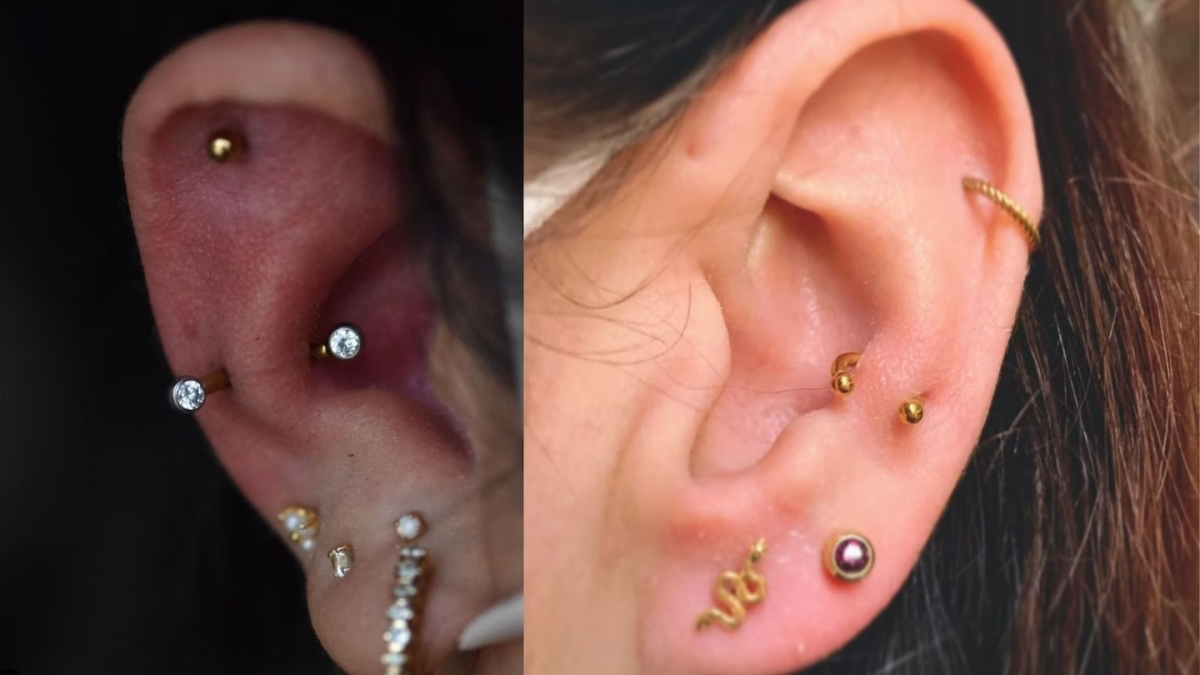
Conclusion
In summary, snug piercings offer a unique opportunity for self-expression, allowing you to showcase your individuality and style. These captivating adornments, with their balanced aesthetics and versatile jewelry options, have gained popularity among those seeking to make a statement. While the road to a perfect snug piercing may have its challenges, including longer healing times and potential discomfort, the result is well worth the journey for those who value the opportunity for personal expression and confidence that comes with it. Whether you’re considering a snug piercing or already have one, remember that proper aftercare is essential to ensure a comfortable healing process and the longevity of your piercing. With the right care, a reputable piercer, and a sense of adventure, you can embrace the world of snug piercings and wear your unique story with pride.

